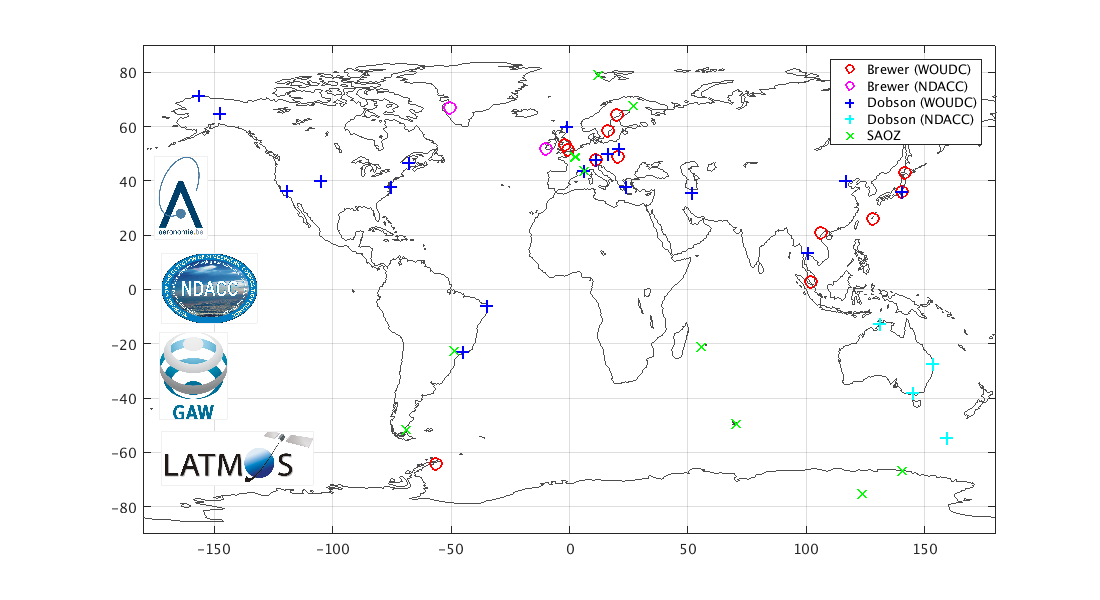Page 3 of 5
Validation Data
Sentinel-5P TROPOMI L2_O3 total ozone column data are routinely compared to correlative measurements acquired by instruments contributing to WMO’s Global Atmosphere Watch (GAW):
- Brewer UV spectrophotometers (Kerr et al., 1981,1988),
- Dobson UV spectrophotometers (Basher, 1982),
- NDACC Zenith-Scattered-Light (ZSL) DOAS UV-Visible spectrometers (Pommereau and Goutail, 1988, Hendrick et al., 2011).
Brewer and Dobson network data are collected either from the World Ozone and UV Data Centre (WOUDC) or from the NDACC Data Host Facility, depending on the best timeliness. ZSL-DOAS network data are collected from the NDACC Data Host Facility, and from the LATMOS SAOZ Real Time (RT) processing facility for near-real-time validation.

References
- Basher, R. E., Review of the Dobson spectrophotometer and its accuracy, Rep. 13, WMO Global Ozone Res. and Monit. Proj., Geneva, Dec. [Available at http://www.esrl.noaa.gov/gmd/ozwv/dobson/papers/report13/report13.html], 1982.
- Hendrick, F., Pommereau, J.-P., Goutail, F., Evans, R. D., Ionov, D., Pazmino, A., Kyrö, E., Held, G., Eriksen, P., Dorokhov, V., Gil, M., and Van Roozendael, M.: NDACC/SAOZ UV-visible total ozone measurements: improved retrieval and comparison with correlative ground-based and satellite observations, Atmos. Chem. Phys., 11, 5975–5995,
https://doi.org/10.5194/acp-11-5975-2011, 2011. - Kerr, J. B., C. T. McElroy, and R. A. Olafson, Measurements of ozone with the Brewer ozone spectrophotometer, in Proceedings of the Quadrennial Ozone Symposium, Boulder, Colorado, edited by J. London, pp. 74–79, Natl. Cent. for Atmos. Res., Boulder, Colorado, 1981.
- Kerr, J. B., I. A. Asbridge, and W. F. J. Evans, Intercomparison of total ozone measured by the Brewer and Dobson spectrophotometers at Toronto, J. Geophys. Res., 93, 11, 129–11, 140, doi:10.1029/JD093iD09p11129, 1988.
- Pommereau, J. and Goutail, F.: O3 and NO2 ground-based measurements by visible spectrometry during Arctic winter and spring, Geophys. Res. Lett., 15, 891–894, https://doi.org/10.1029/GL015i008p00891, 1988.